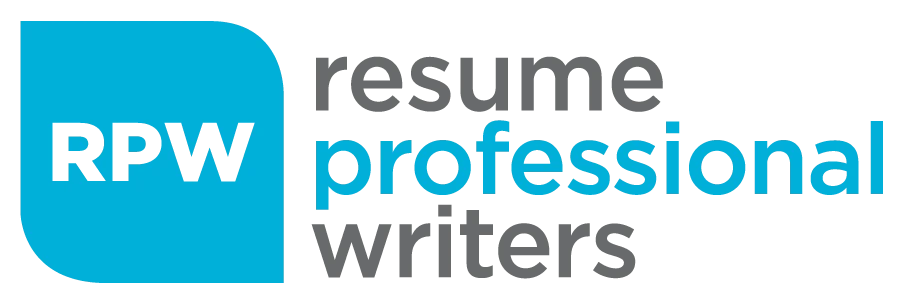Staying focused at work can be challenging, especially with constant notifications, emails, and back-to-back meetings pulling your attention in different directions. Yet, learning how to improve focus at work is one of the most valuable skills you can develop to perform better and advance in your career. When you direct your full attention to important tasks, you not only get more done but also produce higher-quality results that reflect your true potential.
Distractions are unavoidable, but improving focus doesn’t require perfect discipline. It’s about using simple, proven strategies to manage your time, energy, and environment more effectively. By building habits that support concentration and clarity, you can work smarter, perform consistently, and set yourself up for long-term success in your profession.

The Importance of Focus in Career Success
Focus is more than a productivity tool; it’s a key driver of professional excellence. When you stay fully engaged in a task, you produce higher-quality results, make better decisions, and achieve greater consistency in your work. Employers and hiring managers value individuals who can prioritize effectively and deliver results without constant supervision.
Losing focus not only affects daily productivity but also impacts your career trajectory. Poor concentration can lead to missed deadlines, mistakes, and burnout. In contrast, sustained attention empowers you to complete projects efficiently, showcase leadership potential, and create room for career growth. In short, mastering how to improve focus at work is a skill that pays off both immediately and in the long run.
Strategies on How to Improve Focus at Work
Maintaining focus at work becomes easier when you know how to structure your day and mindset. The following strategies will guide you toward better productivity and mental clarity.
1. Identify and Eliminate Common Distractions
The first step toward better focus is understanding what breaks it. Workplace distractions come in many forms—digital alerts, background chatter, and even internal stress. To regain control:
- Silence notifications during deep work periods. Checking messages every few minutes interrupts your cognitive flow.
- Create a distraction-free workspace. Keep only the essentials on your desk and use noise-canceling headphones if needed.
- Use website blockers or productivity tools to limit access to distracting websites during work hours.
- Communicate boundaries. Politely inform colleagues when you need uninterrupted time.
By managing these distractions proactively, you set yourself up for periods of deep, meaningful work that translate into better results.
2. Plan and Prioritize Your Day
Effective time management is a cornerstone of professional focus. One proven approach to how to improve focus at work is to plan your day around your most critical tasks. Start each morning by identifying your top three priorities—these are the tasks that, once completed, will make the biggest impact on your goals.
- Time-block your schedule. Dedicate specific hours to deep work, meetings, and breaks.
- Batch similar tasks. Group related activities like email responses, administrative work, or brainstorming sessions to minimize task-switching.
- Tackle high-priority work first. Morning hours often bring higher energy and mental clarity, making them ideal for demanding projects.
Having a structured plan gives your day direction and reduces the mental fatigue that comes from constantly deciding what to do next.
3. Break Work into Manageable Chunks
Large, complex tasks often feel overwhelming and can lead to procrastination. To counter this, divide big projects into smaller, actionable steps. The satisfaction of completing smaller milestones builds momentum and motivation.
Techniques such as the Pomodoro method—working for 25 minutes followed by a short 5-minute break—can help sustain focus while preventing burnout. For longer projects, aim for deep work intervals of 60 to 90 minutes, followed by a meaningful break.
Breaking tasks into smaller parts gives you clarity, keeps you on track, and helps you stay mentally fresh throughout the day.
4. Optimize Your Work Environment
Your environment plays a powerful role in how well you concentrate. The more comfortable and organized your surroundings, the easier it is to maintain focus.
- Keep your workspace clean and clutter-free. Visual distractions can subtly drain mental energy.
- Adjust lighting and ergonomics. Poor posture and harsh lighting can lead to fatigue.
- Designate zones for specific activities. Separate spaces for deep work, meetings, and relaxation signal to your brain when to concentrate and when to rest.
If you work remotely, dedicate a consistent area in your home for work. This creates a psychological boundary between professional and personal time, allowing your brain to associate that space with productivity.
5. Align Work with Your Energy Levels
Understanding your natural rhythms is an often-overlooked aspect of how to improve focus at work. Everyone has specific times of day when they feel most alert. Observe when your concentration peaks—whether in the morning, afternoon, or evening—and schedule your most important tasks accordingly.
Reserve lower-energy times for routine or creative work that requires less precision. Respecting your body’s rhythms prevents burnout and helps you accomplish more in less time.
6. Build Mindfulness into Your Workday
Mindfulness is one of the most effective tools to sharpen attention. It trains your brain to stay anchored in the present moment instead of wandering toward distractions or worries.
Simple mindfulness exercises can be practiced anywhere:
- Take a few deep breaths before starting a new task.
- Pause to notice your thoughts when your attention drifts, then gently redirect it.
- Engage in short meditation sessions during breaks.
Practicing mindfulness regularly improves emotional regulation, reduces stress, and enhances clarity—critical elements for maintaining focus and excelling at work.
7. Strengthen Focus Through Physical Wellness
Your brain is part of your body; to sustain mental focus, you need physical well-being.
- Sleep well. Aim for 7–9 hours of quality rest to improve alertness and memory.
- Stay hydrated and eat balanced meals. Nutrient-rich foods like fruits, vegetables, and omega-3 fats fuel brain function.
- Exercise regularly. Even short walks improve circulation and boost cognitive performance.
- Manage stress. High stress levels impair concentration, so incorporate relaxation techniques such as breathing exercises or stretching.
These healthy habits support your energy levels and ensure your mind stays sharp during work hours.
8. Practice Single-Tasking, Not Multitasking
While multitasking might feel efficient, it actually reduces productivity and accuracy. Switching rapidly between tasks breaks your concentration and makes your brain work harder.
Instead, focus on one task at a time:
- Set clear start and end goals for each activity.
- Close unrelated tabs or documents.
- If new ideas arise, jot them down and return to them later.
Focusing fully on a single task produces better results and allows you to complete projects faster and with fewer errors—skills that employers deeply appreciate.
9. Take Strategic Breaks
No one can sustain uninterrupted concentration indefinitely. The brain benefits from rest periods to recharge and consolidate information.
- Short breaks (5–10 minutes every hour) prevent fatigue.
- Longer pauses (20–30 minutes after several hours of work) restore creativity and motivation.
- Step away from screens. Try stretching, walking, or listening to calming music.
When used effectively, breaks become part of your productivity rhythm rather than interruptions to it.
10. Review Progress and Celebrate Wins
Improving focus is an ongoing process. At the end of each day, reflect on what helped you stay productive and what caused distractions. Adjust your strategies accordingly. Recognizing small victories—like completing a challenging report or maintaining focus for longer periods—builds positive reinforcement and strengthens your motivation.
These reflections also translate into career insights. Understanding your work habits helps you communicate your strengths to employers or refine how you present yourself in your professional resume.
Why Focus Matters for Career Growth
The ability to stay focused doesn’t just improve your daily workflow—it enhances your professional brand. Employers seek candidates who can manage time effectively, meet deadlines, and maintain composure under pressure. When you demonstrate focus, you project reliability, discipline, and leadership potential.
Mastering how to improve focus at work also enables you to pursue career development more strategically. You can allocate time to upskilling, networking, and refining your professional profile—all critical steps toward achieving your long-term career goals.
If you’re working to improve your focus, consider pairing it with an equally strong professional image. A polished, well-written resume can open doors to roles that match your refined productivity and focus-driven mindset.
Turn Focus into Opportunity with an Expertly Crafted Resume
Improving focus isn’t about working harder—it’s about working smarter. By eliminating distractions, organizing your time, and aligning your habits with your natural energy cycles, you can unlock higher levels of performance and satisfaction in your career.
The journey to mastering how to improve focus at work begins with intentional changes, but its benefits ripple across every aspect of your professional life. With clarity and discipline, you’ll not only complete tasks more efficiently but also position yourself for long-term growth.
At the same time, your ability to stay focused should be matched by how you present yourself to potential employers. Let your achievements and skills stand out with expertly crafted resumes to help you advance your career. A strong professional profile ensures your hard work and focus get the recognition they deserve—bringing you one step closer to your dream role.
Frequently Asked Questions
What causes lack of focus at work?
Lack of focus often stems from multitasking, excessive screen time, interruptions, fatigue, or unclear priorities. Environmental distractions and poor task structure also contribute. Establishing clear workflows and optimizing workspaces reduces these triggers and improves sustained concentration.
How can employees avoid procrastination?
Employees can combat procrastination through structured time blocking, measurable goal setting, and removing digital distractions. Breaking large projects into smaller, manageable parts encourages gradual progress and maintains momentum, especially when deadlines feel overwhelming.
Does workplace design affect focus?
Yes. Factors like lighting, noise control, ergonomic design, and air quality directly impact alertness and cognitive performance. Open layouts foster collaboration but may require quiet zones or noise-masking tools to maintain concentration during analytical tasks.
Which foods enhance focus naturally?
Whole foods containing omega-3 fatty acids, antioxidants, and steady energy sources—such as salmon, blueberries, spinach, and almonds—help improve memory and reduce mental fatigue. Consistent hydration remains equally vital for optimal brain performance.
How long should a focused work session last?
Most professionals sustain peak cognitive engagement for 60–90 minutes before requiring a short break. Following these natural attention cycles maximizes output without exhaustion, promoting sustained focus throughout the workday.








